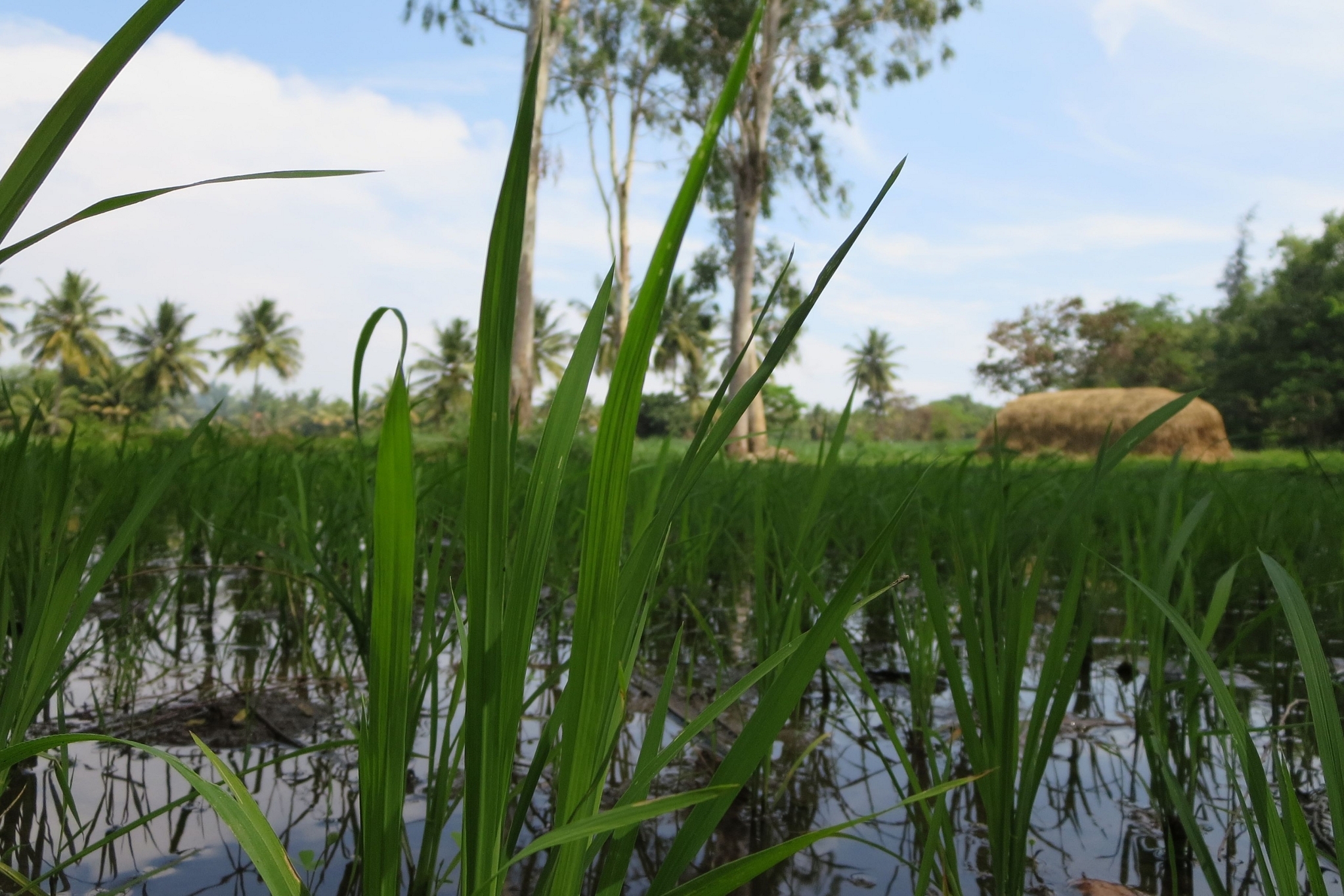Economy
Why India's Agricultural Exports Are Increasing Sharply This Year
- With coronavirus proving to be a problem for exports in some countries — a huge backlog has built up in Brazil for example — India has gained this year.
- If it can impress buyers with quality and competitive prices, it could sustain the current trend in the long run as well.

A paddy field in Mandya, Karnataka.
India’s agricultural exports surged 23 per cent in the first quarter of the current fiscal, mainly in view of higher rice and sugar exports.
The higher shipments come despite the country being under lockdown due to the spread of novel coronavirus (Covid-19).
It is also in line with the trend witnessed since the beginning of this year.
Last month, the Ministry of Agriculture said that exports of agricultural commodities were up by 23.24 per cent between March and June this year at Rs 25,552.7 crore against Rs 20,734.8 crore during the same time a year ago.
The trend is a welcome sign, given the fact that during 2018-19 and 2019-20, agricultural exports had stagnated at around $38.5 billion.
Agricultural exports made up 12.6 per cent of total merchandise exports from the country last fiscal.
India’s agricultural exports are topped by basmati rice, buffalo meat and non-basmati rice.
Statistics show that Indian exports head to over 200 countries with Vietnam, Iran, Saudi Arabia, United Arab Emirates, United States, Indonesia, Nepal, Bangladesh, Malaysia and Iraq making the top 10.
This fiscal, too, basmati rice has been topping the export basket, but non-basmati rice, sugar, pulses such as pigeon pea, green gram, groundnut oil, wheat and onion are the ones that have helped in the shipments’ surge.
The trend should not be surprising for two reasons. One, India has huge stocks of these commodities as others face a shortage. Two, India was prompt to overcome the hurdles posed by the lockdown during the pandemic in helping farmers harvest their crop on time and ensuring timely transportation.
Non-basmati rice exports are a fine example of how India has cashed in on an opportunity in the global market.
Exports to the traditional African region have increased this year, while Malaysia, the Philippines, and Russia have also been buying from India.
One reason for this uptrend is because the Thailand crop has been affected by lower rainfall.
As Thailand prices are higher, Vietnam, another strong player in the export market, has also increased prices for its offerings.
As a result, India has gained.
In particular, India is gaining from exports of par-boiled rice in which Thailand is the only competitor.
Also, Indian exporters are quoting around $100 a tonne lower than Thailand and Vietnam, where prices are hovering around $500 a tonne.
Indian exporters are able to quote lower price because of the rupee depreciating against the dollar.
Also, for countries in North Africa and West Asia, it makes sense to buy from India even if prices were to be a little higher, as freight charges will be lower and also the shipment time.
Indian rice exporters are also witnessing demand from Bangladesh and Nepal, too, thus buoying the uptrend.
On the other hand, India is gaining from a huge 14.5 million tonnes of sugar carryover stocks its mills have in their possession.
It has also taken advantage of Brazil’s problems in sugar production and shipments.
India has exported a higher quantity of sugar to Indonesia, which has made amendments to its raw sugar import norms to accommodate Indian shipments.
After a long time, Malaysia, which has not had the best of relations with India in recent times, has also begun to purchase a higher amount of sugar.
Both these South-East Asian nations require sugar to meet their domestic demand.
The export trend in both these commodities will likely continue at least until the year-end.
Onion exports are higher as Indian prices have been ruling lower since January, while demand for processed pulses such as pigeon pea and green gram has been rising in view of higher off take from the Indian population abroad.
India has also taken advantage of its huge wheat stocks and record production in April, by exporting it to countries such as Lebanon and Afghanistan.
With coronavirus proving to be a problem for exports in some countries — a huge backlog has built up in Brazil — India could gain immensely this year.
If it can impress its buyers with quality and competitive prices, it could sustain these in the long term.
Support Swarajya's 50 Ground Reports Project & Sponsor A Story
Every general election Swarajya does a 50 ground reports project.
Aimed only at serious readers and those who appreciate the nuances of political undercurrents, the project provides a sense of India's electoral landscape. As you know, these reports are produced after considerable investment of travel, time and effort on the ground.
This time too we've kicked off the project in style and have covered over 30 constituencies already. If you're someone who appreciates such work and have enjoyed our coverage please consider sponsoring a ground report for just Rs 2999 to Rs 19,999 - it goes a long way in helping us produce more quality reportage.
You can also back this project by becoming a subscriber for as little as Rs 999 - so do click on this links and choose a plan that suits you and back us.
Click below to contribute.
Latest